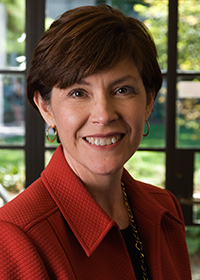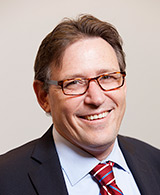Journalism joins Media School

The century-old journalism program at Indiana University becomes part of the brand-new Media School July 1, a move that will position it, along with other IU communications programs, at the forefront of 21st century media education.
The Media School will serve as the university’s pre-eminent site for teaching, research and service about the understanding and production of media. In addition to journalism, the departments of telecommunications and communication and culture will combine to form the new school, which will be part of the College of Arts and Sciences.
With about 70 faculty members, The Media School will capitalize on a rich and diverse heritage in the creation and production of all forms of media, including print, broadcast, radio, film and digital art forms such as gaming, as well as new forms of media and multiplatform storytelling.
“We’re bringing together under one umbrella the best communications programs and an innovative team to design a curriculum that won’t simply respond to the changing media landscape, but will be at the forefront of shaping it,” said Lesa Hatley Major, associate dean at The Media School. “We want to make sure the next generation of young professionals is prepared for the challenges that await them in their careers.”
The first class of students will start in fall 2015, when the curriculum goes into effect. The school is scheduled to move in summer 2016 to Franklin Hall, next to the Sample Gates. Renovation of the building will begin this fall.
With the establishment of The Media School come several other developments:
- Major, interim dean of journalism, will step away from that role July 1 and focus on her work as associate dean of The Media School, a position she assumed last fall.
- Longtime faculty member Bonnie Brownlee, currently senior associate dean of the School of Journalism, will become chair of journalism. Brownlee, BA’72, MA’75, joined the faculty in 1981 and received her doctorate from the University of Wisconsin in 1983. She formerly served as associate dean of undergraduate studies.
- The School of Journalism at Indianapolis will become the Department of Journalism and Public Relations, and will join the School of Liberal Arts at IUPUI. The department will continue to offer bachelor’s and master’s degrees in journalism.
- The Poynter Center for the Study of Ethics and American Institutions will become part of The Media School. The interdisciplinary center, which previously was part of the Office of the Vice Provost for Research, is dedicated to studying ethical issues in American public life. It is named for its benefactor, Nelson Poynter, a 1925 IU graduate in journalism and former editor, president and chairman of the board of Times Publishing Co., and founder of the Poynter Institute for Media Studies in St. Petersburg, Fla. David Smith, who served as the Poynter Center’s director from 1983 until his retirement from IU in 2003, has been appointed interim director. The school will conduct a national search for a permanent director in the next year.
- A search committee of 14 members, chaired by IU Foundation President Dan Smith, is leading the search for a Media School dean, in conjunction with R. William Funk and Associates, a higher education search firm based in Dallas. Candidate interviews are planned for the fall.

“These administrative changes are part of a major transition to strengthen and intensify our ability to research, produce and teach media at Indiana University,” said Larry Singell, executive dean of the College of Arts and Sciences. “The work our faculty is engaged in now, developing governance structures and a progressive multidisciplinary curriculum for The Media School, are the next critical steps in the process.”
Singell said the College is pleased to have the vision and support of Major as associate dean of the school and Brownlee as chair of journalism during the next critical year of collaborative work.
“Our ultimate goal is to bring together the research on the converging forms of media into a single school so that our students and faculty will not only be able to study the changing face of media, but ultimately play a role in shaping its future by understanding the potential of new media to communicate and tell the story,” he said.

